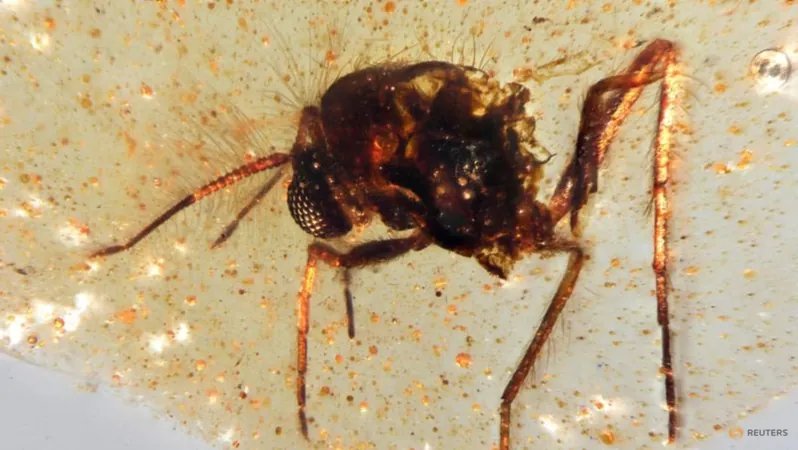
Unveiling Ancient Secrets: Ecuador's Incredible 112-Million-Year-Old Amber Discovery
2025-09-18
Author: Li
A Glimpse into the Cretaceous Era
In a groundbreaking discovery, researchers have uncovered a fascinating trove of fossils within amber found in Ecuador's lush Amazon region. This remarkable find offers a stunning snapshot of a vibrant ecosystem bustling with life during the Cretaceous Period, approximately 112 million years ago—an era dominated by dinosaurs.
What is Amber?
Amber, a fossilized tree resin, often traps living organisms before it solidifies, preserving them in incredible detail. This unique phenomenon has allowed scientists to retrieve a variety of creatures, including wasps, midges, flies, beetles, and even parts of spider webs—painting a vivid picture of ancient biodiversity.
An Unprecedented Discovery in South America
Located near Archidona in Napo Province, this amber deposit represents a significant find, being the largest of its kind from the age of dinosaurs discovered in South America. It stands out against the backdrop of most amber deposits, which are predominantly found in the Northern Hemisphere.
Insights from Paleontology
Leading the research, paleoentomologist Xavier Delclòs from the University of Barcelona expressed the importance of this discovery: "Finding a new site of this importance in the ancient continent of Gondwana provides very valuable information from a region where we previously had little data about the organisms that lived there."
Diverse Insect Life
The amber revealed a myriad of insects, ranging from biting and non-biting midges to aphids, wasps, caddisflies, and beetles. Study co-author Mónica Solórzano Kraemer noted that these findings offer critical insights into the ecological dynamics of the ecosystem that flourished in that epoch. For instance, the biting midges likely dined on the blood of the dinosaurs roaming the area.
The Incredible Preservation of Amber
Delclòs explained the exceptional preservation qualities of amber: "Amber essentially preserves the exoskeletons of small organisms from the past... Under a microscope, they can look like freshly dead organisms, yet they are millions of years old." The sticky resin produced by ancient trees not only trapped these critters but also shielded them from decay, allowing an extraordinary glimpse into the past.
A Shift in Flora
This fossilized find also marks a pivotal transition in Earth's vegetation. Analysis of fossilized plant remains revealed that flowering plants—angiosperms—had begun to dominate, making up about 37% of the flora at the time. These plants, which are now the most diverse group on Earth, played a crucial role in changing the landscape from gymnosperm-dominated forests to those teeming with flowering life.
Conclusion: A Window to the Past
The discovery in Ecuador not only enhances our understanding of ancient ecosystems but also serves as a crucial piece in the puzzle of how modern forests evolved. Delclòs succinctly stated, "This opens a window into how the transition from gymnosperm forests to today's forests dominated by angiosperms took place." This extraordinary find beckons further exploration and promises to unlock even more secrets of our planet's distant past.



 Brasil (PT)
Brasil (PT)
 Canada (EN)
Canada (EN)
 Chile (ES)
Chile (ES)
 Česko (CS)
Česko (CS)
 대한민국 (KO)
대한민국 (KO)
 España (ES)
España (ES)
 France (FR)
France (FR)
 Hong Kong (EN)
Hong Kong (EN)
 Italia (IT)
Italia (IT)
 日本 (JA)
日本 (JA)
 Magyarország (HU)
Magyarország (HU)
 Norge (NO)
Norge (NO)
 Polska (PL)
Polska (PL)
 Schweiz (DE)
Schweiz (DE)
 Singapore (EN)
Singapore (EN)
 Sverige (SV)
Sverige (SV)
 Suomi (FI)
Suomi (FI)
 Türkiye (TR)
Türkiye (TR)
 الإمارات العربية المتحدة (AR)
الإمارات العربية المتحدة (AR)